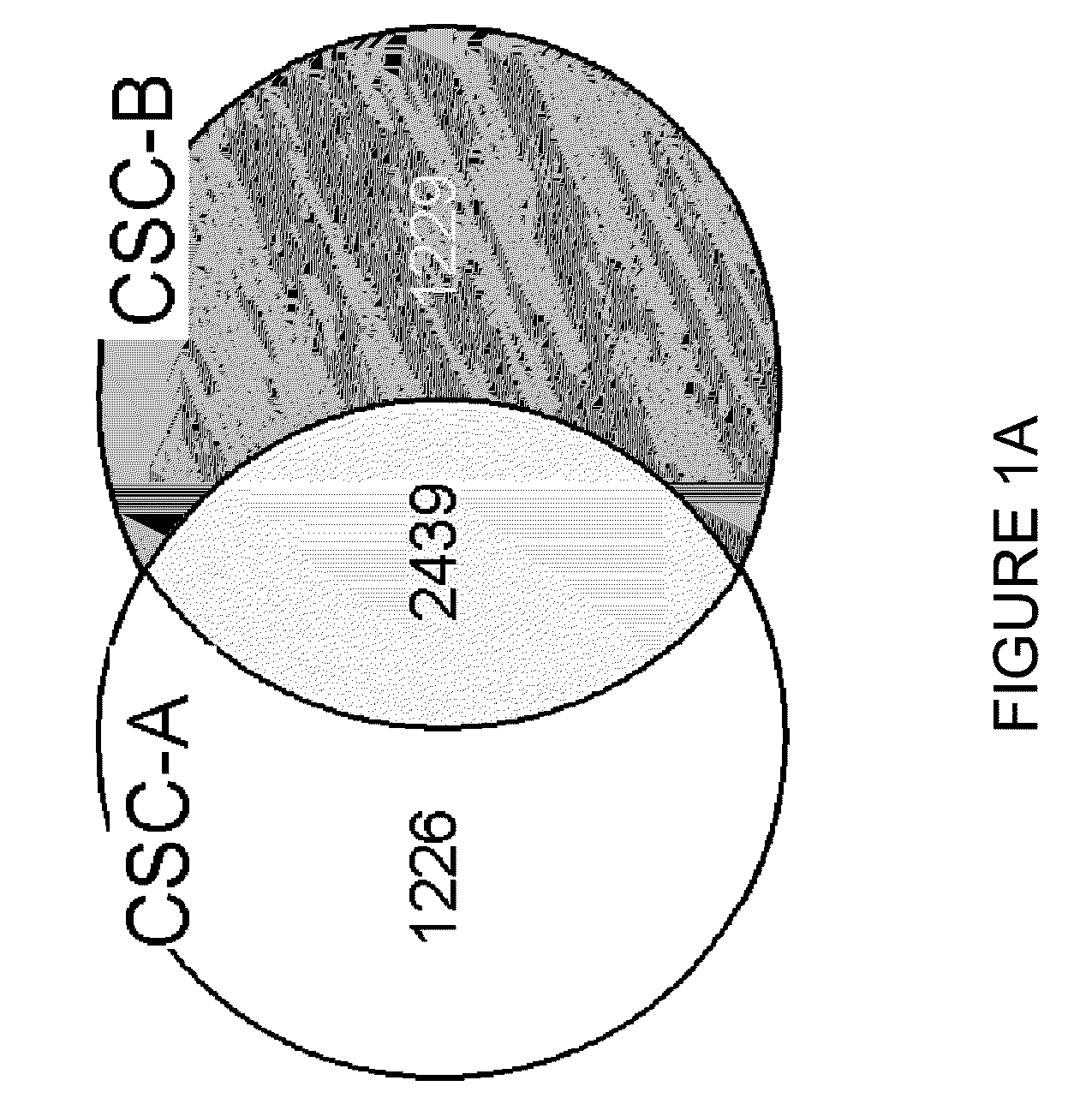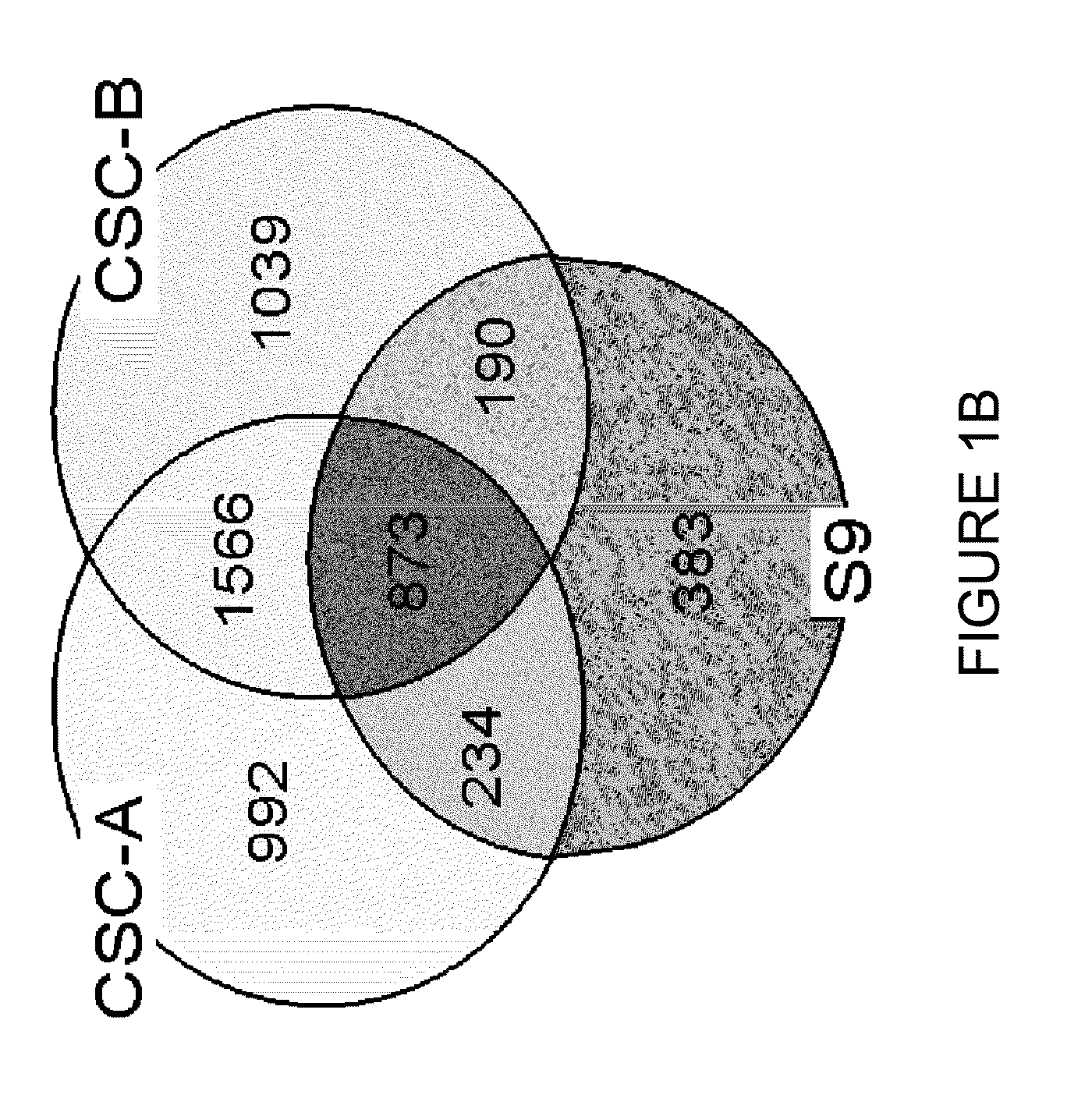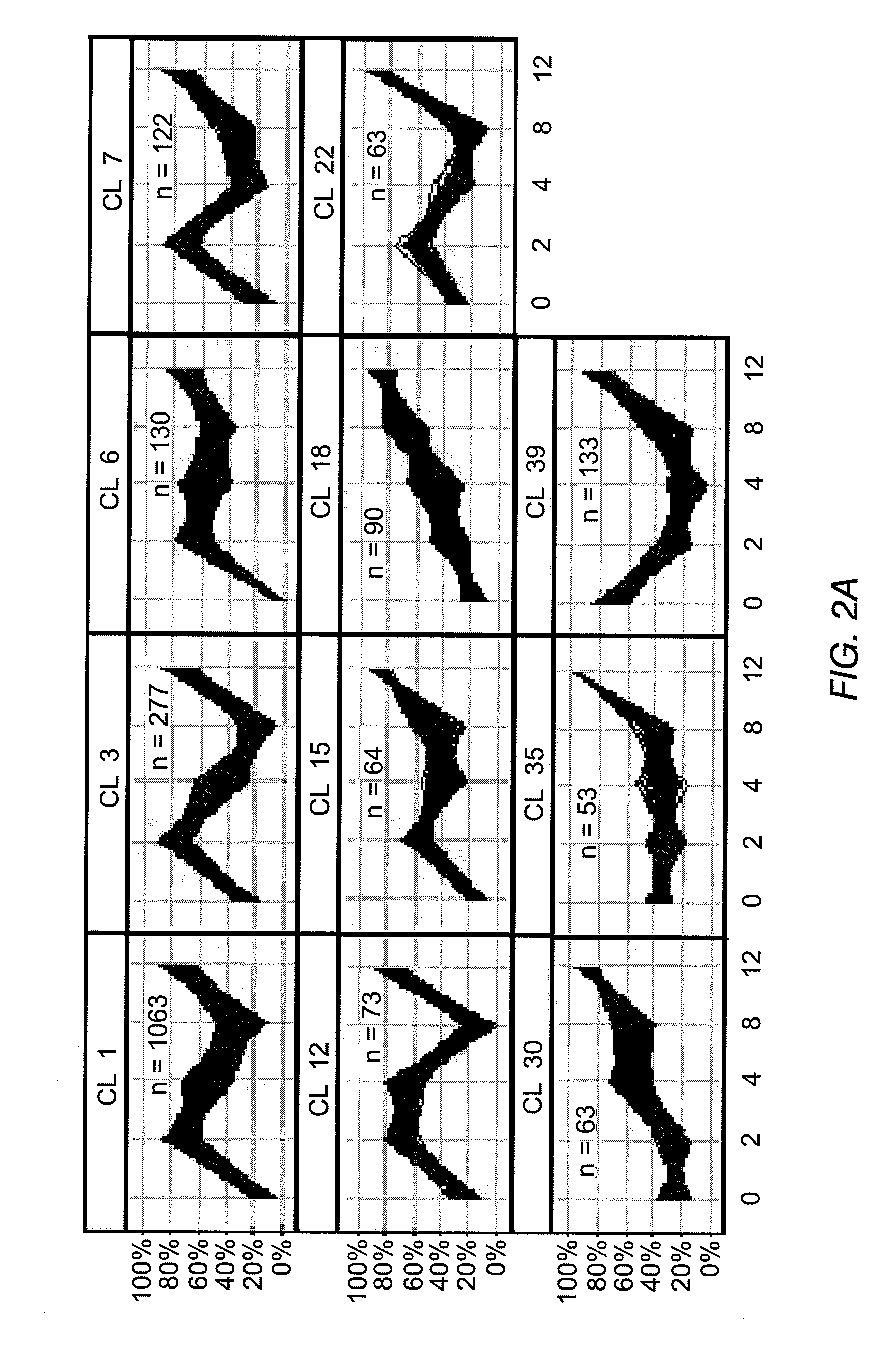Global gene expression analysis of human bronchial epithelial cells exposed to cigarette smoke, smoke condensates, or components thereof
a technology of bronchial epithelial cells and gene expression analysis, applied in the field of global gene expression analysis of human bronchial epithelial cells exposed to cigarette smoke, smoke condensate, or components thereof, can solve the problems of clinically evident disease, less known, and equally complex biological respons
- Summary
- Abstract
- Description
- Claims
- Application Information
AI Technical Summary
Benefits of technology
Problems solved by technology
Method used
Image
Examples
example 1
[0061]Treatment of NHBE Cells with CSCs
[0062]The tobacco smoke condensates were prepared as follows. Smoke was generated from two commercially available nationally sold brands of American cigarettes (Brand A and Brand B) using an INBIFO-Condor smoking machine under Federal Trade Commission (FTC) smoking parameters (2.0 second puff duration, 35 milliliter puff every 60 seconds). Both brands of cigarettes were non-menthol, full-flavor types of American-blended cigarettes with averaged FTC measured values of 13.2 mg tar / 0.88 mg nicotine (Brand A), and 14.5 mg tar / 1.04 mg nicotine (Brand B). Brand A contains tobacco that has been chemically modified to reduce carcinogens (see U.S. Pat. No. 6,789,548, herein expressly incorporated by reference in its entirety), whereas Brand B contains conventional tobacco. Smoke condensates extracted from these two cigarette brands and designated CSC-A and CSC-B, respectively, were collected from the smoke via a series of three cold traps (−10° C., −40°...
example 2
[0075]Isolation of RNA from CSC-Treated Cells and Production of cDNA
[0076]After NHBE cells were exposed to the cigarette smoke condensates (CSC-A and CSC-B), as explained in Example 1, RNA was prepared by harvesting cells for total RNA extraction after 0 (untreated), 2, 4, 8, and 12 hours of treatment. The medium was aspirated and the flasks were rinsed twice with pre-warmed 15 mL Dulbecco's Phosphate Buffered Saline. After the second rinse, 5.0 mL of cold TRIzol® (Invitrogen Corp., Carlsbad, Calif.) were added to cover the cells in each flask. Each flask was vigorously vortexed for approximately one minute. The TRIzol® was pipetted up and down over the surface of the flask at least five times to suspend the cell lysate. The resulting TRIzol® / cell lysate was allowed to remain in the flask for at least 10 minutes at room temperature after which it was transferred to microfuge tubes and extracted with 0.2 ml chloroform per 1.0 ml TRIzol / cell lysate. The tubes were capped and shaken vi...
example 3
[0090]This example describes experiments that were conducted on mice to demonstrate that the tobacco product used to generate CSC-A (Brand A) is a reduced risk tobacco product in that it was less likely to contribute to a tobacco-related disease, as compared to a conventional tobacco product of the same class (e.g., “full flavor” cigarette), Brand B, which was used to generate CSC-B in the previous examples. In summary, the response of previously initiated SENCAR mice to repeated topical applications of Brand-A or Brand-B Cigarette Smoke Condensates (CSC-A or CSC-B), was tested over a period of 24 consecutive weeks. One week after a single initiating dose of 50 μg 7,12-dimethylbenzanthracene (7,12-DMBA), female SENCAR mice were exposed to the following three-times-per-week treatment regimen: Negative-Initiation Control (0.1 ml acetone promotion); Positive Control (1 μg TPA promotion); Test (Brand-A CSC promotion, low-dose [10 mg] and high-dose [20 mg]); or Test (Brand-B CSC promotio...
PUM
| Property | Measurement | Unit |
|---|---|---|
| time | aaaaa | aaaaa |
| time | aaaaa | aaaaa |
| concentration | aaaaa | aaaaa |
Abstract
Description
Claims
Application Information
 Login to View More
Login to View More - R&D
- Intellectual Property
- Life Sciences
- Materials
- Tech Scout
- Unparalleled Data Quality
- Higher Quality Content
- 60% Fewer Hallucinations
Browse by: Latest US Patents, China's latest patents, Technical Efficacy Thesaurus, Application Domain, Technology Topic, Popular Technical Reports.
© 2025 PatSnap. All rights reserved.Legal|Privacy policy|Modern Slavery Act Transparency Statement|Sitemap|About US| Contact US: help@patsnap.com



